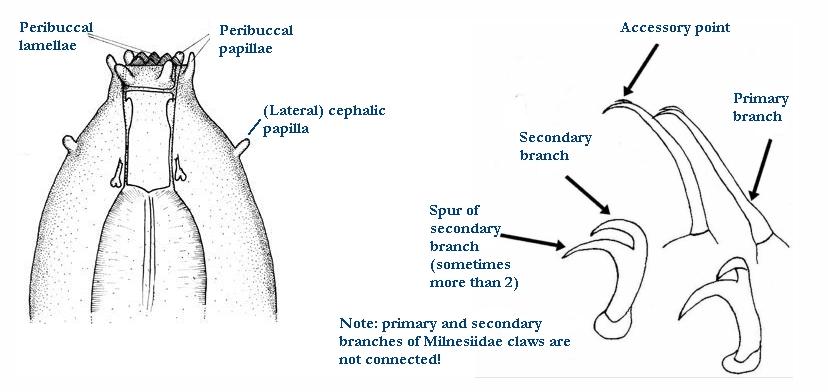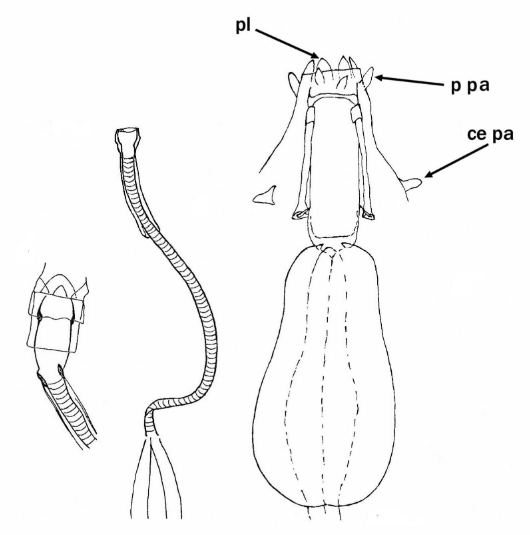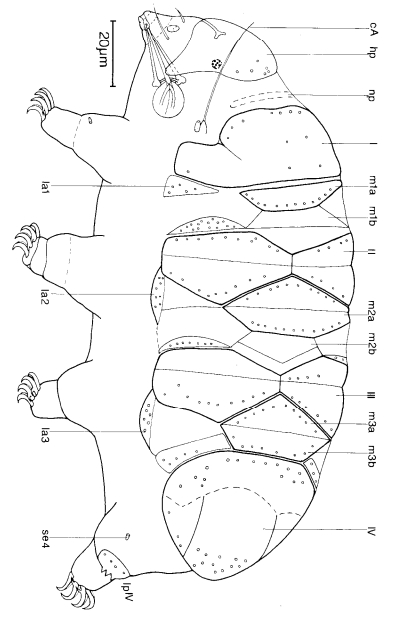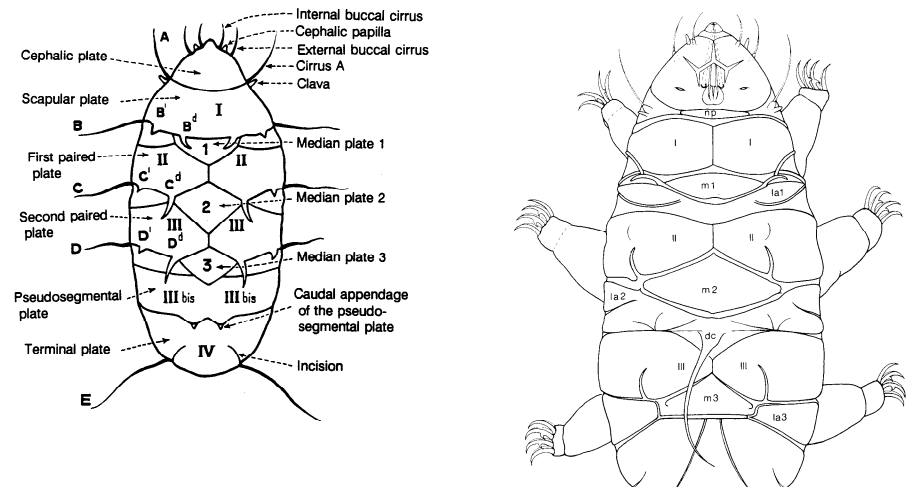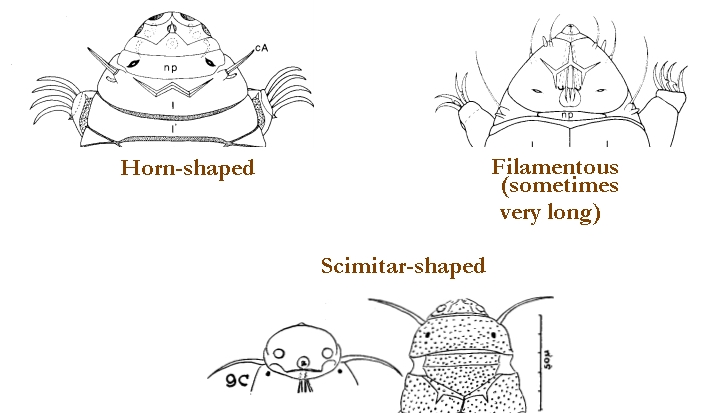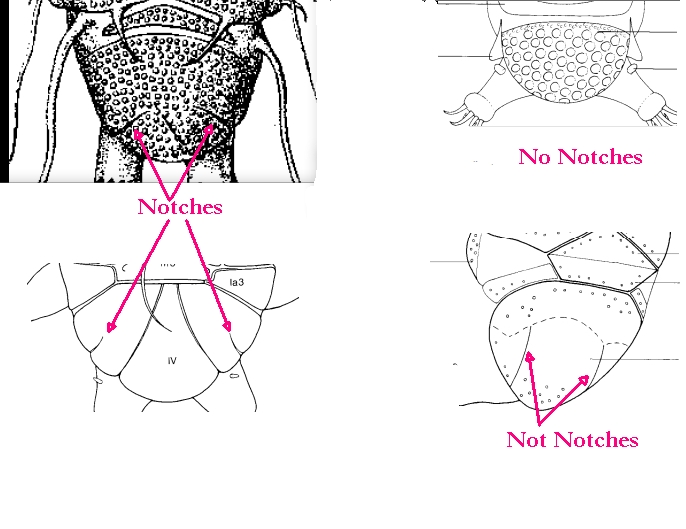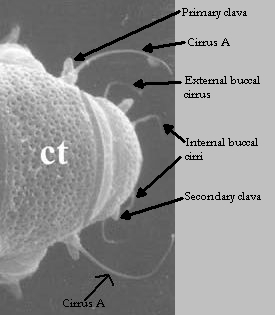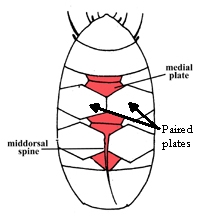Genus description from Schultze 1834: “Corpus elongatum, depresso-cylindricum, in decem segmenta distinctum. Pedes octo, alternis segmentis a quarto ad decimum affixi. Caput antennis destitutum, oculi duo.”
Translated: The body is an elongated, flattened cylinder in ten segments. Eight feet on alternate segments from the fourth to the tenth. No antennae on head, two eyes.
Genus description from Schuster et al. 1980: “Ten buccal lamellae present; without peribuccal papulae. Buccal tube short, rigid, without spiraled thickenings. Buccal mucrones and interior buccal baffles present. Pharynx contains apophyses, macroplacoids, or macro- and microplacoids, but no septulum. Cuticle with pores of various sizes, number, and distribution. Two double claws of each leg of similar size and shape; lunulae present; claws not connected; sequence 2,1,1,2. Eggs with protruding processes are laid freely.”
Genus description from Pilato & Binda 2010: “Claws of the hufelandi type. Bucco-pharyngeal apparatus of the Macrobiotus type, Macrobiotus variant. Pharyngeal apophyses and placoids present. Stylet furcae typically shaped. Lunules present in the known species. Eggs laid freely in the known species; egg shell with processes (only two exceptions are known).”



Citations:
Pilato G, Binda MG. 2010. Definition of families, subfamilies, genera, and subgenera of the Eutardigrada, and keys to their identification. Zootaxa. 2404: 1-54.
Schultze CAS. 1834. Macrobiotus hufelandii, animal e crustaceorum classe novum, reviviscendi post diuturnam asphyxiam et ariditatem potens. Berolini, Berlin.
Schuster RO, Nelson DR, Grigarick AA, Christenberry D. 1980. Systematic criteria of the Eutardigrada. Transactions of the American Microscopical Society. 99: 284-303.





